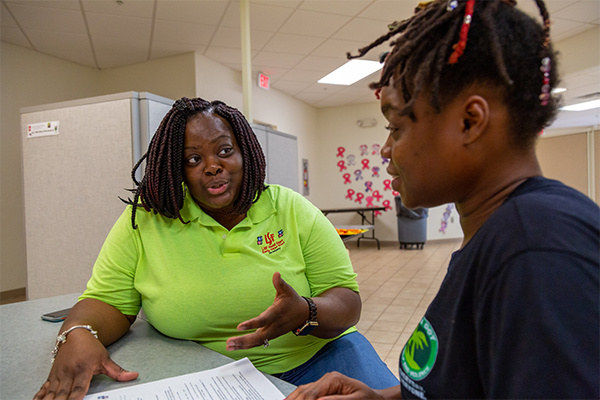![]() As part of the strategic planning process, your program may consider developing a comprehensive five-year plan and action plans that outline strategies for addressing school readiness goals.
As part of the strategic planning process, your program may consider developing a comprehensive five-year plan and action plans that outline strategies for addressing school readiness goals.
Five-Year Plan. Beginning with the baseline application and then annually, the five-year plan provides an outline of what the program intends to accomplish over the entire project period. This plan establishes the five-year program goals, objectives, and outcomes (the results achieved). It identifies expected outcomes and expected challenges. For example, if a program sets a goal to improve child passenger safety after reviewing community data about the number of children injured in motor vehicle crashes, some expected outcomes over the five-year period might be:
- An increase from 25 percent to 50 percent in the number of Head Start families who attend a car seat inspection night to learn how to choose the right car or booster seat for their child and install it properly
- An increase in the number of families from 50 percent to 60 percent who attend a car seat inspection night after the distribution of child passenger safety educational resources in families' home languages
- An increase in the number of families from 60 percent to 75 percent who attend a car seat inspection night after the program recruits and trains staff as Certified Passenger Safety Technicians (CPST) qualified to host additional inspection events
- An increase in the number of families from 70 percent to 85 percent who attend a car seat inspection night through a new partnership with local businesses that offer Head Start families access to free car seats or seats at a discounted rate

Think of your action plan as a GPS for your program. It offers step-by-step guidance for arriving at a desired destination.
An expected challenge might be providing access to information in multiple languages to help families choose and properly install a car seat in their vehicle. Another challenge might be finding affordable car seats.
Action Plans. An action plan can outline how a program intends to accomplish its overall goals and objectives from year to year and how they are aligned with the five-year plan. The action plan is developed by determining what actions will be undertaken each year. They enable the program to make progress towards the established goals and objectives. Think of the action plan as a global positioning system (GPS) for your program. Imagine the data put in the GPS to be the contents of the five-year plan instead of an address. The action plan is the destination the GPS guides you to. The action plan focuses on when actions will take place, where they will happen, and who will carry out the series of steps necessary to achieve the goal. It also identifies resources needed, like financial supports, as well as measures of success, including the evidence or data sources that confirm that success. Action plans may also include quarterly status updates.
School Readiness Goals. School readiness goals are especially influential in shaping a program's action plan. Many programs form school readiness teams to organize their efforts in delivering educational program services. This planning should address all program models, ages of children served in the program, children who are dual language learners, and children with suspected developmental delays or diagnosed disabilities. Developing program-wide school readiness goals, a key part of planning, is also required by the HSPPS.3 The Implementation Guide: Using the ELOF to Establish School Readiness Goals guides programs on how to establish or revise school readiness goals that are aligned with the Head Start Early Learning Outcomes Framework (ELOF) for children ages birth to 5. School readiness goals should address all five areas of the ELOF central domains. Programs should establish these goals in consultation with families whose children are participating in the program.
 How do your strategic plans address your program goals?
How do your strategic plans address your program goals?
There are a variety of ways programs can include family members in decisions about school readiness goals and planning. For example, programs can invite parents and key family members to participate on the school readiness teams. In developing school readiness goals and planning for children's school readiness, programs can also draw on aggregated data from sources like parent/teacher conferences and weekly conversations between home visitors and parents in home-based programs.
3. HSPPS 45 CFR §§ 1302.102(a)(3) and 1304.11(b)(1)(i)-(iii).
Program Planning
Thoughtful planning is critical to programming. Explore these resources for guidance throughout the five-year Head Start grant cycle. Learn how to establish continuous cycles of improvement that involve key stakeholders in data-based decision-making. Find resources to help build on achievable program and school readiness goals and fiscal objectives. Discover materials that guide grantees in creating community and self-assessments, and achieve positive outcomes for children and families.
Program planning and service system design together make up one of the 12 management, planning, and oversight systems of the Management Systems Wheel.
Goal Setting
 Family goal setting is essential to the work of Head Start programs. It relies on the information that program staff gather through assessments and ongoing communication, such as the families’ strengths, passions, and challenges. As relationships are built and strong partnerships formed, Head Start staff help families set goals and work together to make progress toward those goals.
Family goal setting is essential to the work of Head Start programs. It relies on the information that program staff gather through assessments and ongoing communication, such as the families’ strengths, passions, and challenges. As relationships are built and strong partnerships formed, Head Start staff help families set goals and work together to make progress toward those goals.
Successful goal setting is done in seven steps in the context of the Family Partnership Process. Explore these resources to learn more about goal setting with families.
Program Planning Systems
Agencies aiming to deliver Head Start services must carefully craft and execute their programs. Use these materials to discover how effective planning practices ensure programs stay attuned to community needs. Learn how setting clear program goals, objectives, outcomes, and action plans can enhance child and family outcomes. Get insights and examples illustrating how to monitor progress toward achieving family outcomes.
Dive into a toolbox of resources that can readily bolster your program's strategic planning.